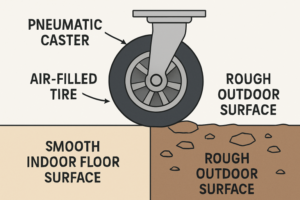Walking down the hair care aisle can feel overwhelming. With countless bottles promising volume, shine, and repair, how do you find the one that’s truly right for you? It’s no surprise that so many options exist, as many brands work with private label shampoo manufacturers to create unique formulas for every hair concern. But this wide selection can make a simple task feel complicated. This guide will help you cut through the noise and choose the perfect shampoo to meet your hair’s unique needs.
Understanding Your Hair Type
The first step in finding the right shampoo is getting to know your hair. Your hair’s texture, porosity, and scalp condition are the most important factors to consider.
Identify Your Hair’s Texture
Hair texture generally falls into a few main categories.
- Fine Hair: This hair type has thin strands that can easily get weighed down by heavy products. It often lacks volume and can become oily quickly.
- Medium Hair: This is the middle ground. The strands are not too thin or too thick, and it tends to hold styles well.
- Thick or Coarse Hair: These strands are wider and more prone to frizz and dryness. This hair type can handle richer, more moisturizing products.
Assess Your Scalp’s Condition
Your scalp health is just as important as your hair’s texture. A healthy scalp is the foundation for healthy hair.
- Oily Scalp: If your hair feels greasy a day after washing, you likely have an oily scalp. You need a shampoo that cleanses thoroughly without stripping natural oils.
- Dry Scalp: A dry scalp can feel tight, itchy, and may produce flakes. It needs a gentle, hydrating shampoo to restore moisture.
- Normal Scalp: If your scalp feels comfortable and balanced, you have a normal scalp. You can focus more on your hair’s other needs.
Common Shampoo Ingredients and Their Benefits
Once you know your hair and scalp type, you can start looking at ingredients. The list on the back of the bottle tells you everything you need to know.
For Oily Hair and Scalps
Look for ingredients that clarify and balance. Ingredients like tea tree oil or salicylic acid can help control excess oil production without being overly harsh. Avoid shampoos that are heavily moisturizing or creamy, as they can weigh your hair down.
For Dry or Damaged Hair
Your hair needs moisture and protein. Seek out shampoos with ingredients like glycerin, shea butter, or argan oil. These help to hydrate and nourish dry strands. Proteins like keratin or silk amino acids can help repair damage and strengthen the hair shaft.
For Fine Hair
Volume is your goal. Look for lightweight formulas that won’t flatten your hair. Ingredients like panthenol (a form of vitamin B5) can help thicken hair strands and add body. Avoid heavy oils and silicones that can create buildup.
For Color-Treated Hair
Protecting your color is key. Use sulfate-free shampoos, as sulfates can strip color and moisture from your hair. Look for products with UV filters and antioxidants to prevent fading and keep your color looking vibrant.
Tips for Selecting the Perfect Shampoo
Now that you have the knowledge, it’s time to make a choice. Here are a few final tips to guide you.
Read Labels, Not Just Claims
The front of the bottle is for marketing. The back of the bottle tells the truth. Spend a moment reading the ingredient list to see if it aligns with your hair’s needs. Ingredients are listed in order of concentration, so the first few are the most important.
Consider a Rotating Routine
Your hair’s needs can change with the seasons or due to styling habits. It can be helpful to have two different shampoos on hand. For example, you might use a clarifying shampoo once a week to remove product buildup and a hydrating shampoo for your regular washes.
Don’t Be Afraid to Experiment
Finding the perfect shampoo can take some trial and error. What works for someone else might not work for you. Pay attention to how your hair looks and feels after washing. If it feels clean, soft, and manageable, you’re on the right track. If it feels stripped, heavy, or greasy, it might be time to try something else.
Choosing the right shampoo doesn’t have to be a guessing game. By understanding your hair type and learning to read ingredient labels, you can confidently select a product that helps your hair look and feel its best.









